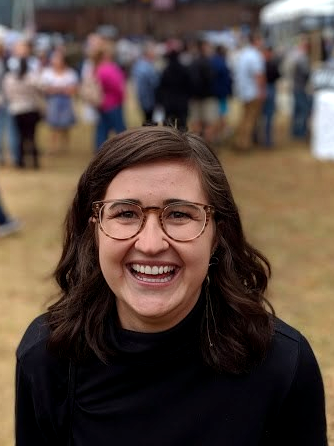
This article was written by Lindsey Bineau, Budget & Management Analyst at the City of Durham, North Carolina. Lindsey wrote this article as part of the Crisis Management Cohort with Drucker Institute. Read all the articles from the cohort here. Connect with Lindsey on LinkedIn.
My name is Lindsey Bineau and I am a Budget & Management Analyst for the City of Durham, North Carolina. Over the past five months, COVID-19 has affected our City’s revenue streams as people are asked to stay at home to curb the spread of the virus. Many City employees have been teleworking, while others have modified their work environments to better promote social distancing. With so much change happening all at once, I thought it would be helpful to enroll in the 2020 Crisis Management Cohort to learn about how to make more effective decisions.
In this cohort, I learned that the first step of effective decision making is determining whether it’s necessary to make a decision in the first place. Patience is key in identifying whether a decision needs to be made right away – not something I naturally excel at. At the beginning of the COVID-19 crisis, I expected City leadership to make quick budgetary decisions given our unprecedented situation. It was clear that the City would likely be facing large revenue deficits given the stay-at-home orders, and we were all thinking about what that would mean for service provision in the next year.
While we sat through meetings with the City Manager and Deputy City Managers, I questioned why they weren’t making any determinations about how to make up our projected budget gap. Now, I know they were simply practicing good decision-making. They waited until they had the most information possible before making a determination about how to act, and saved their energy on only making absolutely critical decisions. For those decisions that could wait, they waited.
A colleague of mine, who has experience in emergency management, once said that the best thing you can do in an emergency situation – when someone yells “fire” – is stop and take a deep breath. When anything strange suddenly catches us off guard, our brains take a few seconds to catch up to what’s happening. This pause allows our brains to act thoughtfully, rather than on impulse. I like to think about the first step of crisis decision making in similar terms. City leadership “took a breath” when the shock of COVID-19 began. This breath allowed everyone to make strategic choices about how to allocate resources for the upcoming year.
In this cohort, we also learned about “planned abandonment,” or ending a program or policy that simply isn’t serving its intended purpose anymore. This relates closely with the last step in the decision-making framework, “testing a decision against actual results.” Sometimes we make a decision with a certain set of information and then later receive new information. With this new information, we discover that the program or policy we’ve put into place isn’t actually achieving its desired end result. The logical decision to make in this situation is to stop providing that program; however, despite access to data showing a program is no longer working, we often fail to discontinue it. Thus, leaders need to actively counter this tendency when considering the best course of action in any given situation.
I plan to tie together these ideas in my future work. As Peter Drucker wrote, “Leaders don’t make many decisions; they make decisions that make a difference.” This is all the more reason to thoughtfully make decisions that have far-reaching or long-term impact. Rather than rushing to make decisions in crisis mode, I will force myself to reflect and consider what additional information may be necessary before moving forward. Is it possible for me to collect more data before acting? Will more data potentially change my decision? If the answers to both of these questions are “yes,” I will delay decision-making so as to ensure I am more likely to make a decision that “makes a difference.” As new data is gathered, I will integrate it into my decision.
Drucker also compared decisions to surgery, saying that every decision has the potential for shock. Inevitably, my decisions won’t always be the right ones. As I gather more data, I will work to be unafraid of abandoning those decisions, policies, or programs that are categorically not accomplishing their original intent. I will attempt to embrace failure as an opportunity to make “courageous” decisions about how we can change course to better serve the residents of a community. In other words, I’ll be willing to conduct surgery and even risk shock if I’m confident that the decision to abandon a program will put the community I serve in a better position to thrive.
Overall, the 2020 Crisis Management Cohort has supplied me with a framework that will allow me to make more effective decisions. I look forward to carrying it forward with me in future endeavors!
